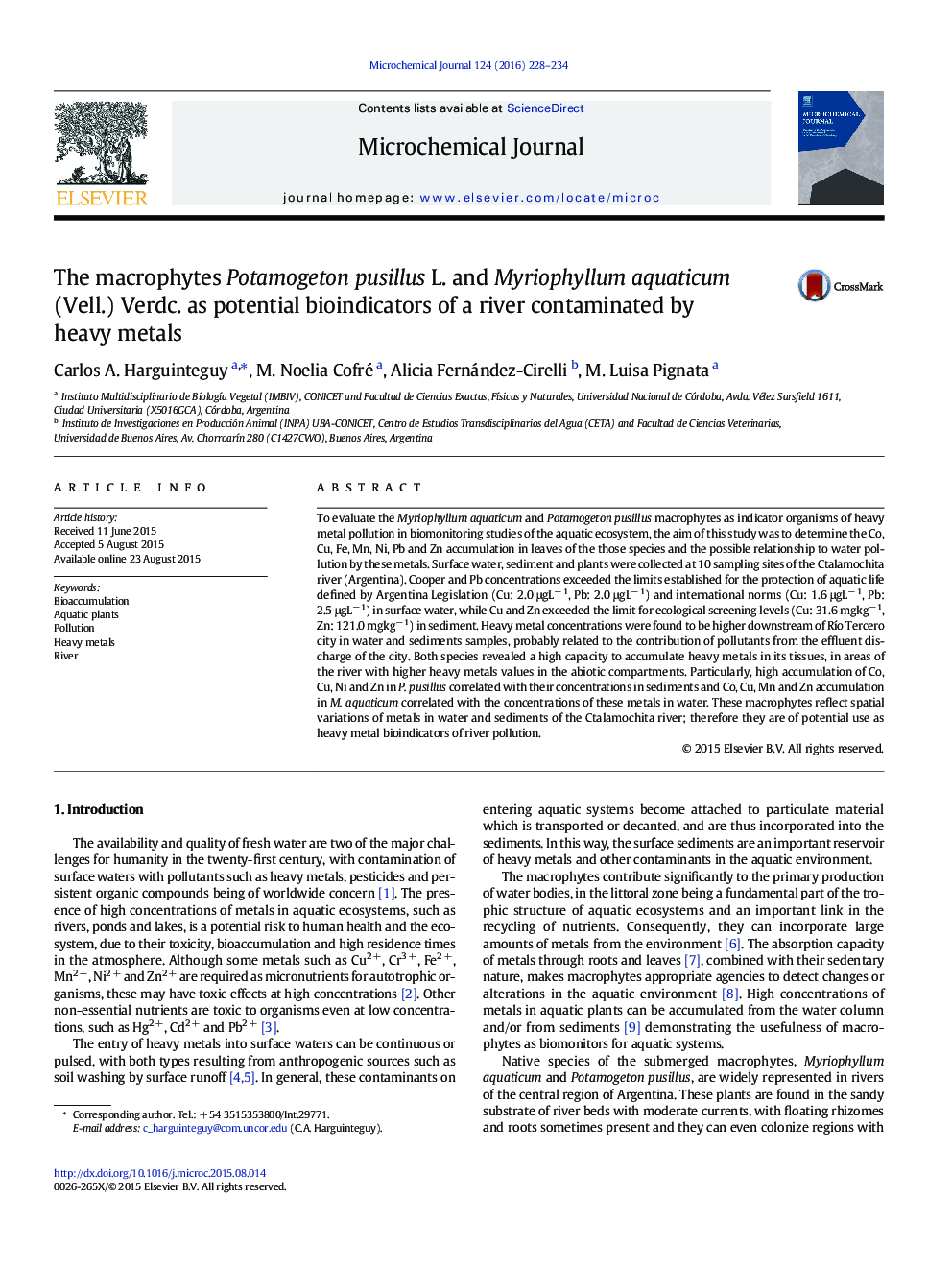| Article ID | Journal | Published Year | Pages | File Type |
|---|---|---|---|---|
| 7642100 | Microchemical Journal | 2016 | 7 Pages |
Abstract
To evaluate the Myriophyllum aquaticum and Potamogeton pusillus macrophytes as indicator organisms of heavy metal pollution in biomonitoring studies of the aquatic ecosystem, the aim of this study was to determine the Co, Cu, Fe, Mn, Ni, Pb and Zn accumulation in leaves of the those species and the possible relationship to water pollution by these metals. Surface water, sediment and plants were collected at 10 sampling sites of the Ctalamochita river (Argentina). Cooper and Pb concentrations exceeded the limits established for the protection of aquatic life defined by Argentina Legislation (Cu: 2.0 μgLâ 1, Pb: 2.0 μgLâ 1) and international norms (Cu: 1.6 μgLâ 1, Pb: 2.5 μgLâ 1) in surface water, while Cu and Zn exceeded the limit for ecological screening levels (Cu: 31.6 mgkgâ 1, Zn: 121.0 mgkgâ 1) in sediment. Heavy metal concentrations were found to be higher downstream of RÃo Tercero city in water and sediments samples, probably related to the contribution of pollutants from the effluent discharge of the city. Both species revealed a high capacity to accumulate heavy metals in its tissues, in areas of the river with higher heavy metals values in the abiotic compartments. Particularly, high accumulation of Co, Cu, Ni and Zn in P. pusillus correlated with their concentrations in sediments and Co, Cu, Mn and Zn accumulation in M. aquaticum correlated with the concentrations of these metals in water. These macrophytes reflect spatial variations of metals in water and sediments of the Ctalamochita river; therefore they are of potential use as heavy metal bioindicators of river pollution.
Related Topics
Physical Sciences and Engineering
Chemistry
Analytical Chemistry
Authors
Carlos A. Harguinteguy, M. Noelia Cofré, Alicia Fernández-Cirelli, M. Luisa Pignata,
